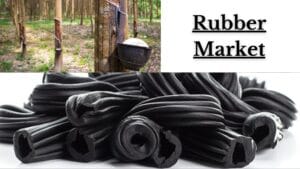
The global rubber market is projected to reach USD 51.21 billion by 2027, growing at a CAGR of 5.3% during the forecast period. This growth is primarily driven by the increasing demand from the automotive industry, particularly due to rubber’s excellent insulation properties. According to a report by Fortune Business Insights titled “Rubber Market Size, Share & Industry Analysis, By Type (Natural and Synthetic), By Application (Tire, Non-Tire Automotive, Footwear, Industrial Goods, and Others), and Regional Forecast, 2020-2027,” the market was valued at USD 40.77 billion in 2019.

Get a Sample PDF Report: https://www.fortunebusinessinsights.com/enquiry/sample/rubber-market-101612
The Report lists the Main Companies in the Rubber Market:
Market Driver:
Rising Application of Rubber in Numerous Industries to Boost Market
The growing demand for tire and other automotive parts will simultaneously spur opportunities during the forecast period. The growing utilization of rubber in wide-ranging automotive products such as tires, crap tubes, adhesives, hoses, pipes, gaskets, and roll coverings will further enhance the scope of the market. Moreover, the increasing application in footwear, industrial goods, construction, textiles, and other consumer products will aid the expansion of the market. For instance, the use of latex offers substantial protection against water, chemicals, electricity, impact, and low temperatures. Additionally, its use in a variety of textiles, and consumer products, such as bands, protective covers, mats, and others will further foster the growth of the market.
Properties such as heat and abrasion resistance make rubber a highly useful and valuable raw material in various end-use industries. It is mostly used in manufacturing products such as tires, crap tubes, adhesives, hoses, gaskets, and roll coverings. The rising demand from the automotive industry for tire and non-tire applications is one of the key rubber industry trends. It is majorly used in the manufacturing of tires due to its strong properties, such as tear resistance and toughness. It also works under low-temperature conditions. It is a perfect material for the manufacturing of tires and hence, accounts for over 40% of the share in the overall tire composition. Additionally, properties, such as weather resistance, insulation property, and flexibility increase the usage in industrial applications including transmission belts, elevators, and non-flat belts.
Disturbed Supply Chain to Dwindle Business Amid Coronavirus